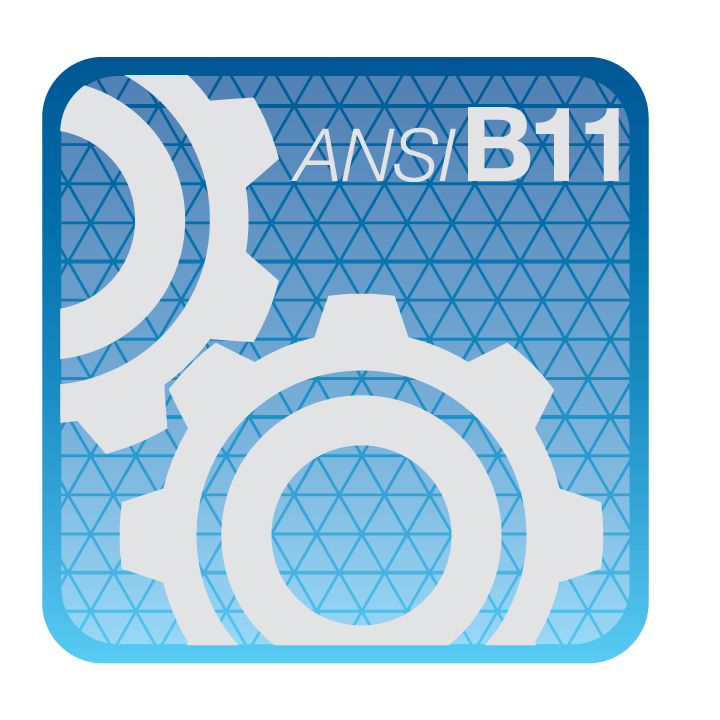WHY SHOULD I PARTICIPATE in B11 STANDARDS DEVELOPMENT ACTIVITIES?
B11 committees provide the opportunity, the space and the freedom to voice your input/opinions or ask questions. Through participation, YOU CAN:
have a direct and material impact on the development of American National Standards on machinery safety;
help your company / organization / clients / customers achieve acceptable risk with feasible risk mitigation;
reflect your company’s or organization’s voice into future standards;
gain a deeper understanding of future standards prior to their publication, and which can potentially provide you with an edge over your competitors who are “not at the table;”
obtain great networking opportunities with leading safety specialists, thereby providing strategic opportunities, exceptional and unique cross-educational opportunities through collaboration with a diverse group of professionals;
accrue credibility and stature, both personal and organizational, by being associated with a renowned and premier machinery safety standards development program.
HOW CAN I PARTICIPATE in ANSI B11 STANDARDS DEVELOPMENT?
First, you need to decide the level at which you wish to participate. There are two different levels: The B11 Standards Development Committee (B11 SDC) which is the higher-level strategic development and oversight body for the ANSI B11 series of documents; or at the individual B11 Standard or Technical Report writing Subcommittee level. These are not mutually exclusive; many of the B11 SDC Members also participate in one or more B11 writing Subcommittees as well).
1) B11 SUBCOMMITTEE (SC) PARTICIPATION
Each one of the nearly three dozen documents in the B11 series has its own writing subcommittee (SC) comprised of volunteers and subject matter “experts” who actually revise older standards or write new ones. The SCs are relatively autonomous from the B11 SDC and when they believe they have essentially completed an authorized revision or development, the draft then goes to the B11 SDC Member organizations who have expressed a voting interest in that standard, and the remainder follows rigorous ANSI procedural steps before it can become an ANSI-approved American National Standard.
These subcommittees are open to involvement and participation by individuals who have some knowledge of and interest in the subject matter, and who have a material interest in and/or impact by the standard. They need only make the request to the B11 Secretariat to be added to the roster (subject to reasonable size limitations). They are expected to actively participate in the standard or technical report project under development, and at a precompetitive observance of antitrust principles, including misuse of the process to provide any sort of commercial advantage in their organization’s interest or a market disadvantage to any competitor (in other words, one is expected to “check their corporate hat at the door”). The time to develop a standard within the SC can vary substantially, depending on quite a number of variables and factors (subject matter; new document vs. revision and whether the revision is a major or a limited one; experience and ability of the Chair, and so forth). With in-person meetings, usually three or four can easily be accommodated within a calendar year however, the increasing use of remote/virtual meetings can increase the yearly meeting frequency. In general, development from start to finish is most commonly between two and three years, with our shortest development time at 9 months. There is no annual fee or dues for participation.
2) B11 STANDARDS DEVELOPMENT COMMITTEE(SDC) PARTICIPATION
The B11 SDC consists of over 30 organizational members (large and small corporations, trade associations, professional societies, government agencies, etc.), that are represented by a designated Delegate and Alternate and it is the body that ANSI recognizes as the “consensus body” for the series of B11 standards and technical reports on machine safety and votes on B11 standards to become American National Standards. The B11 SDC often engages in significant issues that have influence and impact on machinery safety at both the machine supplier and machine user level, and they help formulate policy on interaction(s) and/or alignment with regulatory agencies, other domestic standardization activities, as well as international standards development projects. The B11 SDC meets twice per year (1.5 days each) usually in late January and July. There are annual organizational membership dues which are used to offset the substantial ANSI membership fees paid by the B11 Secretariat to maintain its accreditation to develop American National Standards.
Membership to the B11 SDC is obtained only through formal application, vetting and approval by the existing B11 SDC Members. Please review the criteria SDC Members use to approve new applicants. Once you are ready, you may download, complete and submit a membership application to the Secretariat which will then be placed on the agenda for the next scheduled B11 SDC meeting. B11 SDC membership interest categories are as follows:
Manufacturer / User / Trade Association / Industrial/Commercial / Government Agency / Professional Society / Insurance / Organized Labor / Testing Laboratory / Integrator / Other.
